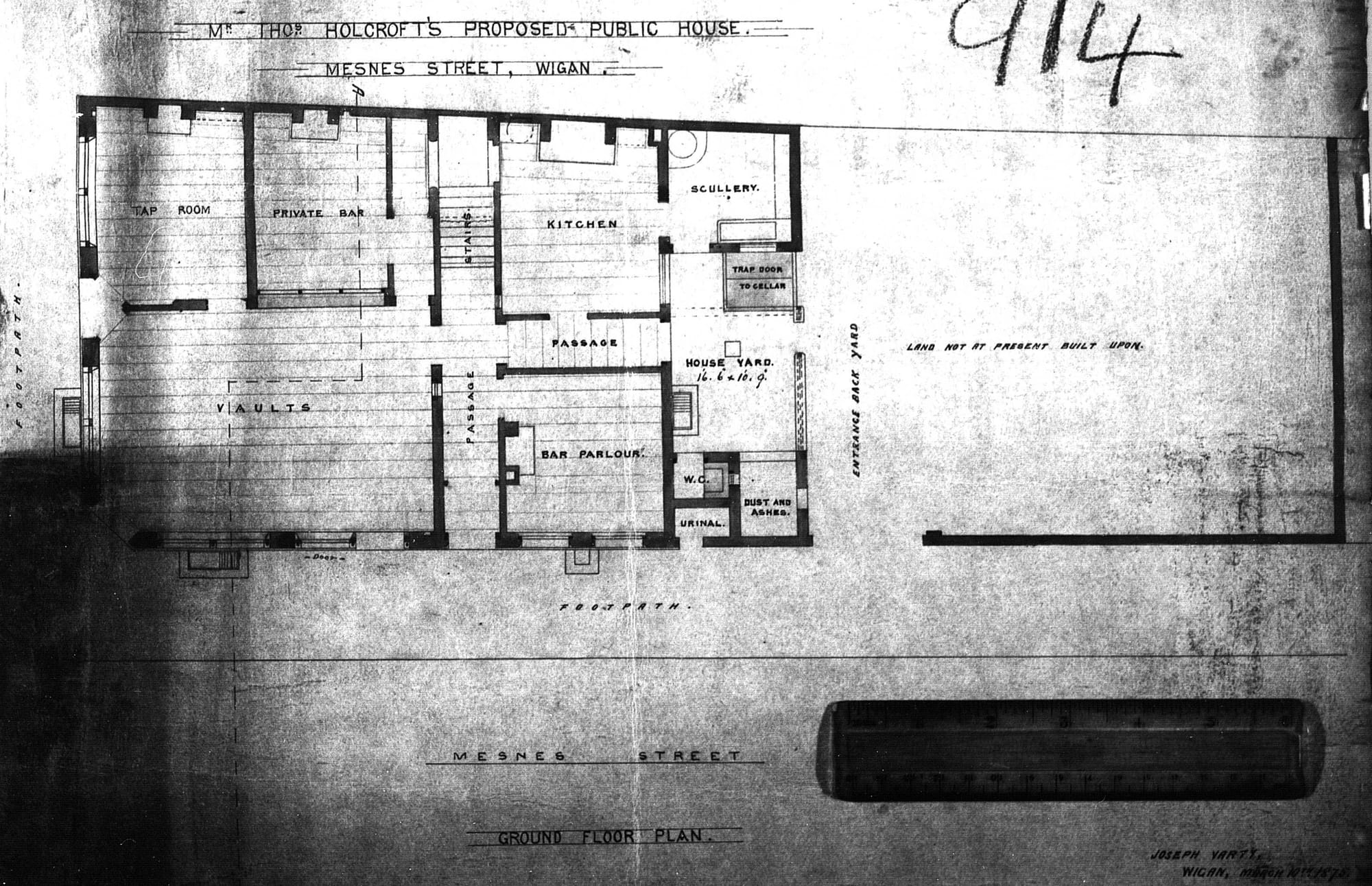History of the Market Hotel
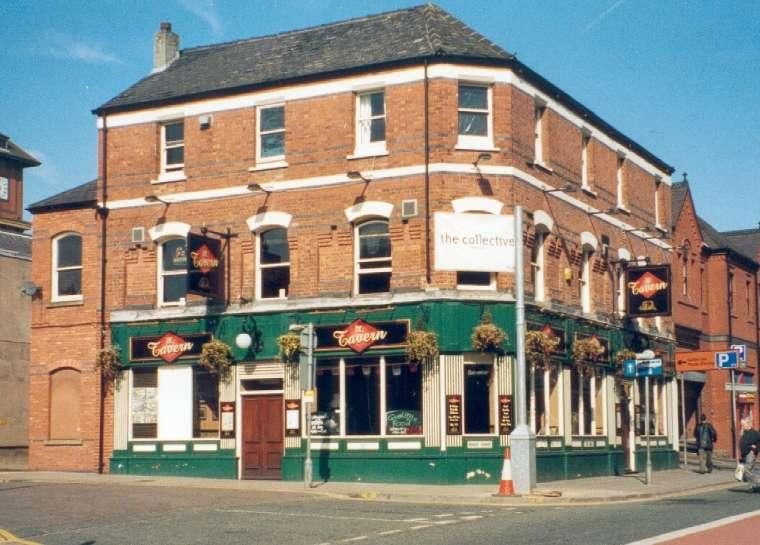
THE MARKET HOTEL
The Market Hotel was built in 1875 during a decade of big change for the town centre. Both the Moot Hall and town hall were demolished whilst the market moved from Market Place to Market Street with the building of the now sadly missed old market hall in 1877. Market Place then became the centre of the Wigan’s Horse and steam tram system that was introduced in 1880.

Mesnes Street was a new addition to the town centre and wa built to create more of a link from the town centre to the newly built Mesnes Park. There had previously been tree lined pathways running along the location of the street, from Mesnes Terrace down to the backs of the buildings on Standishgate. Just off Mesnes Street, taking up part of the location of what is now the Tavern and Marsden Street was Marsden Place. This was a landscaped square surrounded by 9 large Georgian town houses. During the 1800’s it had become a well to do area of town with residents such as William Marshall, the Minister of Hope Chapel (formerly on the corner of Hope Street and Woodcock Street) and John Aspull, professor of music.
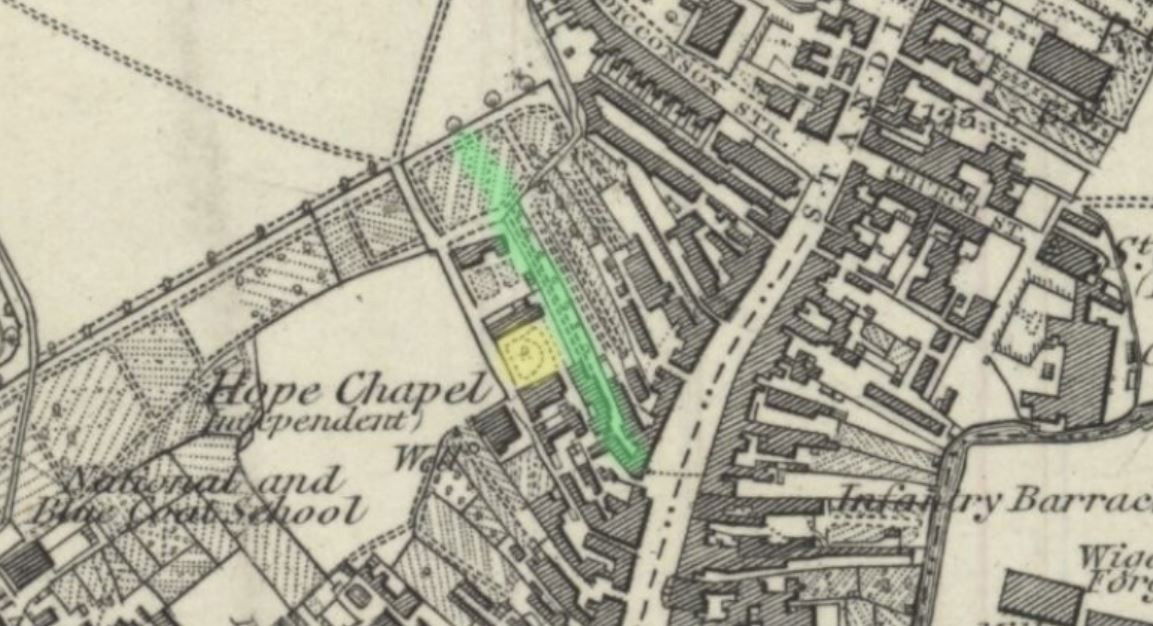
The green highlighted area shows how the area which became Mesnes Street during the 1870’s. The yellow square is Marsden Place which was replaced by the Market Hotel and Marsden Street.
The Market Hotel was initially built as a Coaching Inn. Prior to the railways, Coaching Inn’s were a vital part of the inland transport infrastructure all around Europe. They were built mainly for travellers to give them somewhere to rest, eat and drink. They would also have adjoining stables; which would give horses from mail and stagecoaches somewhere to rest overnight before continuing their journey or they would swap their horses for ‘fresh’ ones before moving on. The stables of the Market Hotel in Wigan however, also gave somewhere for the market traders to keep their horses.
It was built in 1875 by Thomas Halcroft. Thomas had originally been an engine driver on the London and North Western Railway. At this time he met Charlotte Jackson who was working at her uncle’s pub, the Dog and Partridge Hotel on Wallgate. They married and Thomas left his job on the railways and they both moved into the Coach and Horses on Hallgate. When the pub was demolished to make way for the new Market development, Thomas made the decision to build the Market Hotel. Whilst construction took place he temporarily ran the Dog-i’th-Thatch on Standishgate.
The Market Hotel was an immediate success from the day it opened and it continued to thrive as the base for the traders of the newly opened market. In 1879 an application went in by Henry Standish to build another Coaching Inn with stables and to be called the “New Market Hotel”. Its location was to be behind Hope Chapel and just 14 feet from the back of the Three Crowns Hotel. It was also just 100 yards in either direction from the Market Hotel and the Legs of Man. The other pubs clearly saw it as competition and Hope Chapel weren’t keen on having a drinking establishment so close to them, so with such a large amount of opposition, the application failed and the New Market Hotel was never built. Soon afterwards however, plans to build what was to be the Park Hotel were submitted and this time they passed. This would prove to be bigger competition for the Market Hotel as it was built directly behind. The new market was proving to be increasing popular though and there was a lack of nearby hotel rooms for both traders and people travelling in to visit the market, so the application was passed.
The increased competition didn't appear to have any effect on the Market Hotel as it continued to thrive as the most popular hostelry in the town centre. With popularity also came trouble however. On 30 October 1880, Thomas Morris ‘a smartly built man of vagrant appearance’ was twice asked to leave the Market Hotel after causing a disturbance. Eventually he wrestled Thomas’s wife Charlotte to the ground before threatening Thomas with a knife. The police arrived and arrested him and he was to spend the next 4 days in jail before appearing in court on 3rd November. The Mayor decided 4 days was long enough in jail and granted his release.
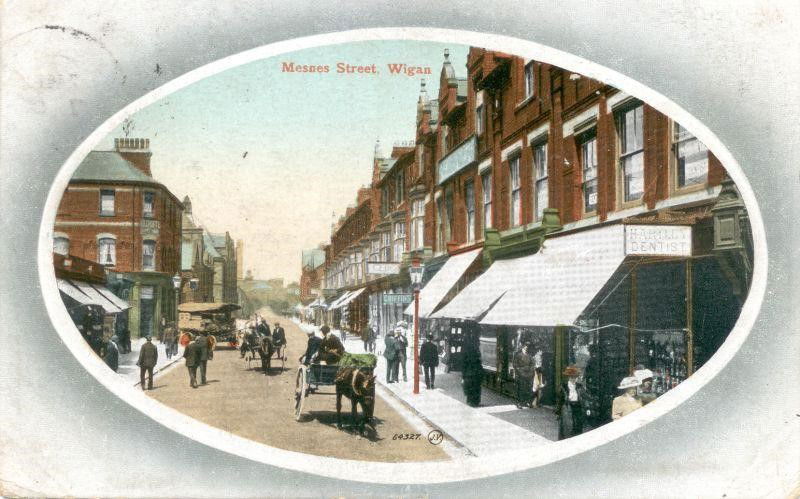
Thomas Holcroft died in 1890, and the Market Hotel was then run for the next decade by his wife Charlotte until she died in 1900, when it was then taken over by son James and wife Ellen (daughter of William Hart from the Railway Hotel in Platt Bridge). After five years James decided to cash in and sold it at Wilcock’s auctioneers on King Street in 1905. Bidding started at £5000 and reached £17,000 – a huge amount at the time; approximately £1.3 million by today’s standards. As a comparison - the pub was most recently sold last year (2020) for £169,000, showing how much less profitable the pub industry has become in recent years. James went on to run the Green Man Hotel on Standishgate.
The new licensee of the Market Hotel was George Caldwell. His wife Martha was in fact the daughter of previous owner Thomas Halcroft. Prior to this they had run the Brickmakers Arms on Woodhouse Lane, taking it over in 1899. They lived at the Market Hotel with 7 family members along with four servants.
George Caldwell died suddenly in bed at the Market Hotel, aged 50 in 1917 and the license was temporarily passed on to his son, John Thomas Caldwell. The history of the building over the next few years is uncertain but in 1931, it was taken on by the Cook family and it would stay in their possession for the next 46 years. It’s this period that is most fondly remembered by Wiganers, in particular for landlord Colin Cook. He was often described as someone who treated everyone the same, regardless of their backgrounds. And it showed by the huge variety of clientele the pub attracted. One room would be filled with businessmen, another by the hippies and folk club, another with Irish navvies and the tiny snug filled with old women. During the daytime, staff from John England’s would descend on the pub for their dinners – most ordering pie and gravy – reputedly the best in Wigan. Speaking to ‘Past Forward’ magazine in 2001, Colin’s son said the following about the pub and his father. “The Market Hotel opened at lunchtime and evening time, seven days a week, every week of the year. Apart from his annual holiday and his one night a week off, Colin would be at the pumps. One of his many skills, which I often observed, would be his ability to get two complete strangers, who had usually just called in for one drink, engaged in conversation and then proceeding to buy each other one or more drinks whilst Colin would move on to two more unsuspecting customers!”
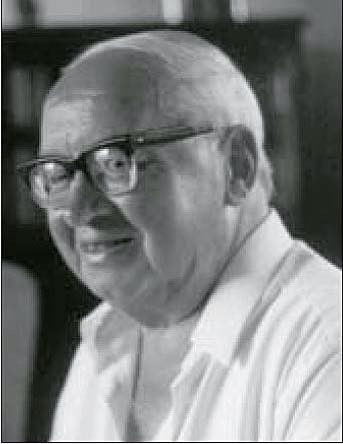
Landlord Colin Cook
“The Market Hotel was a meeting place for many organisations. The Old England Club, The Burma Star Association, Manchester Regiment and Comrades, The R.A.F. Association, Wigan Hockey Club, Wigan Rugby Union Club and The Magic Circle, to name but a few. Members of the Amalgamated Engineers Union would call into the Market every Friday night to pay their Union subscriptions. The one meeting that for many weeks would cause me the greatest mystery was the Wigan Mountaineering Club. I would see them all arrive and go upstairs but seldom saw many leave until the answer was revealed – they were abseiling from the upstairs window!”
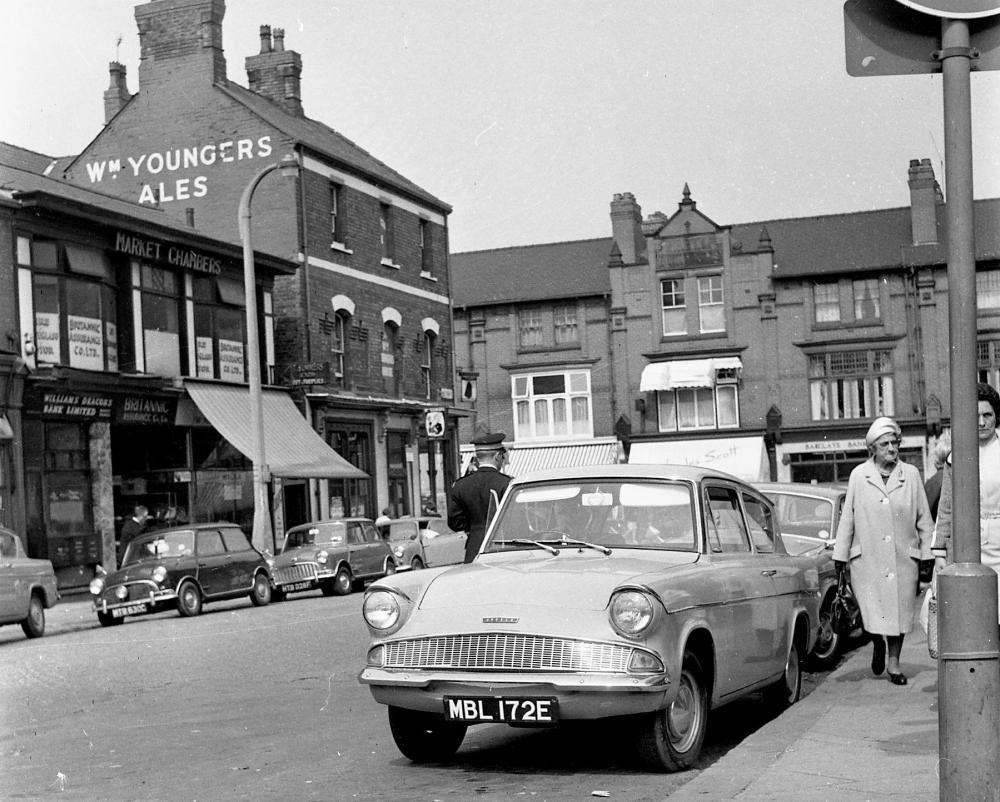
Market Hotel seen from the Marsden Street side in the 1960's.
The pub was also known to some as the “Bright Eye”. One of the upstairs windows was painted over and featured a large eye, gazing down Mesnes Street. It no doubt looked odd to outsiders but it signified Colin’s own specially brew that he sold – called Bright Eye; a mixture of two light beers.
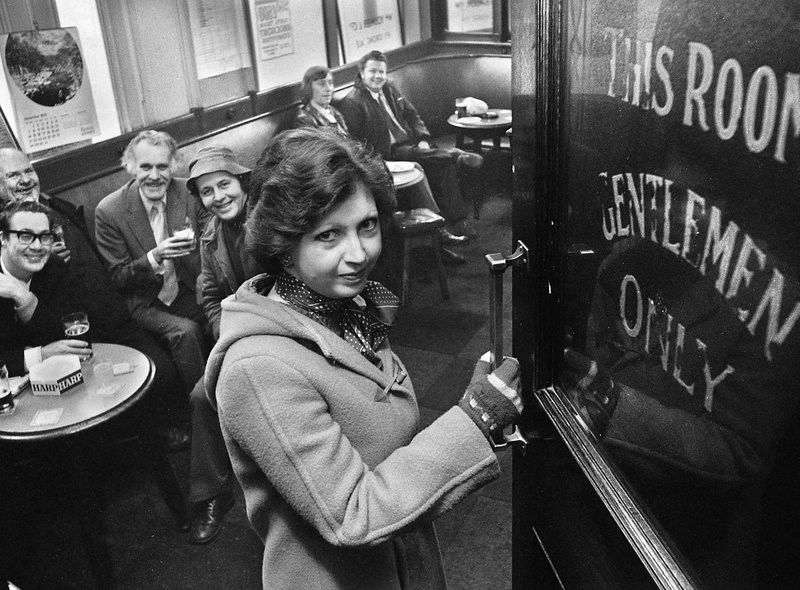
The 29th December 1975 was the first day of the UK’s new Sex Discrimination Act. Prior to this, most pubs had men only rooms. Frank Orrell from the Wigan Evening Post was down at the Market Hotel that day to document the first time a woman was allowed to enter their gentlemen only room – the first being student Marilyn Evans. (Photo courtesy of Wigan Observer/Wigan Post)
Following Colin’s tenure the pub was renamed the Market Tavern. In 1978, all of the original multi room Victorian interior was all ripped out to make the pub open plan. Two of the four entrance doors were taken out and replaced by windows, but keeping to the original design and not spoiling the exterior look of the building.
The Market Tavern is perhaps most infamously known for what happened there in the afternoon of 29th March 1986 when a riot broke out between Latics and Bolton fans prior to their game at Springfield Park. Bricks and stones were hurled through the windows whilst tables and chairs followed in the opposite direction. A Bolton fan was stabbed and ended up in Wigan infirmary. Landlord Alan Mason spoke to the press at the time and stated “The cost of the damage to the pub is going to run into thousands of pounds. It was very frightening.”
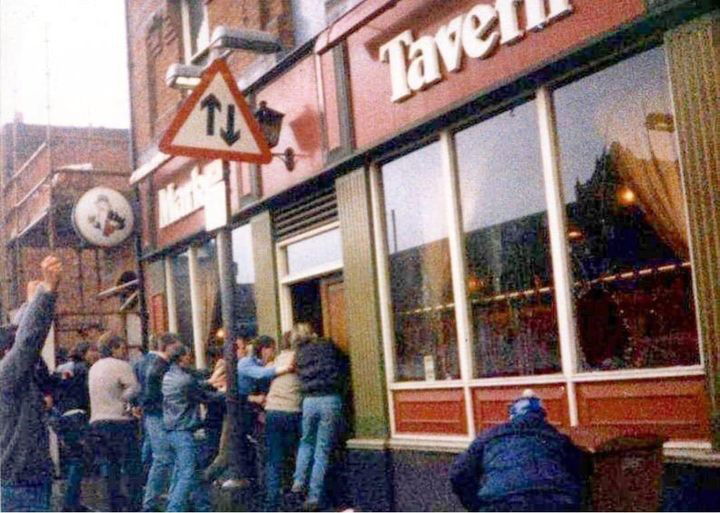
Riot at the Market Tavern in 1986 prior to a Wigan v Bolton game.
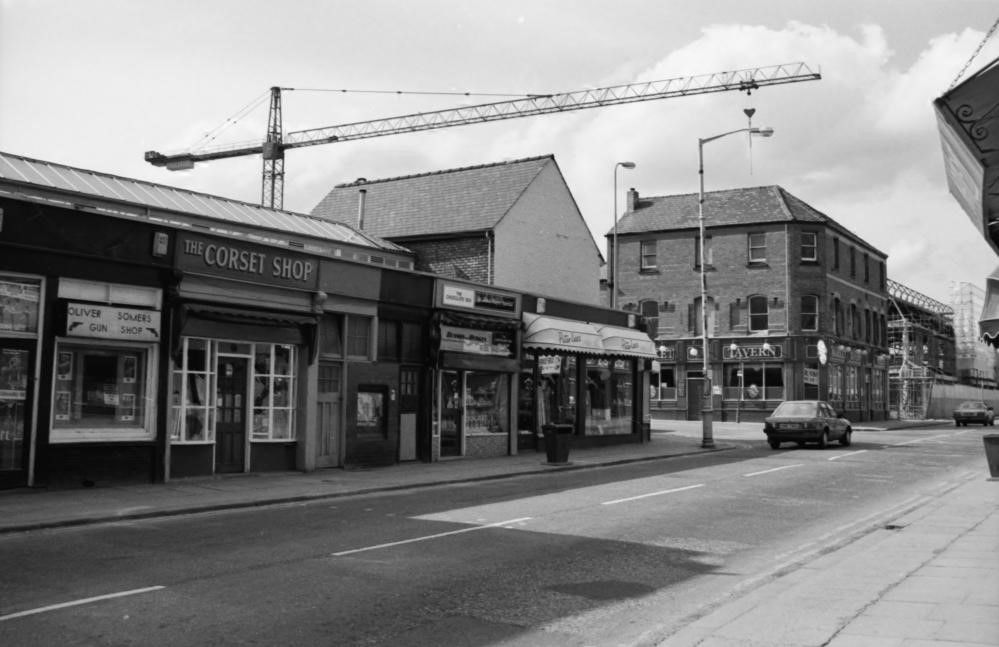
Last pub standing. Photo was taken in 1988 during the construction of the Galleries. Most of the pubs in the area had been demolished in the 1970's during the construction of the Wigan Arcade. The Galleries construction led to the demolition of the Park Hotel, the Taverns adjacent neighbour for over a century.
In 1991 the pub was expanded into the basement when part of the cellar was converted into a licensed bar. In the mid 90’s the pub had a change in management and a name change to Steppes. By the 2000’s the pub was not as busy has it had been at weekends. In January 2002 the Wigan Music Collective were invited to move to the top floor of Steppes after a fallout with the owners of Shapiros on King Street West where they’d previously been hosting their gigs. I’d been booked to dj for the WMC at Shapiro’s – it was my first foray into djing and initially I was disappointed to be djing a pub rather than a club venue. Would the switch in venue work? Would anyone turn up? I needn’t have worried – the place was packed out. Half the town seemed to be down there that night to support the WMC in their change of venue. This move changed the fortunes of the pub over the next few years as it became a must visit venue every Saturday night for the town’s alternative scene and anyone wanting to see live music. The room itself might not have been as good a venue as the one previously used at Shapiro’s but the pub and location seemed to work for more people and it opened up the live music scene to the wider public.
Steppes underwent a name change again and became known as the Tavern and the next few years would see the WMC build up their reputation and aside from local bands they’d start attracting more and more upcoming bands from around the country and the US; Thee Oh Sees and Oxes being a couple of highlights.
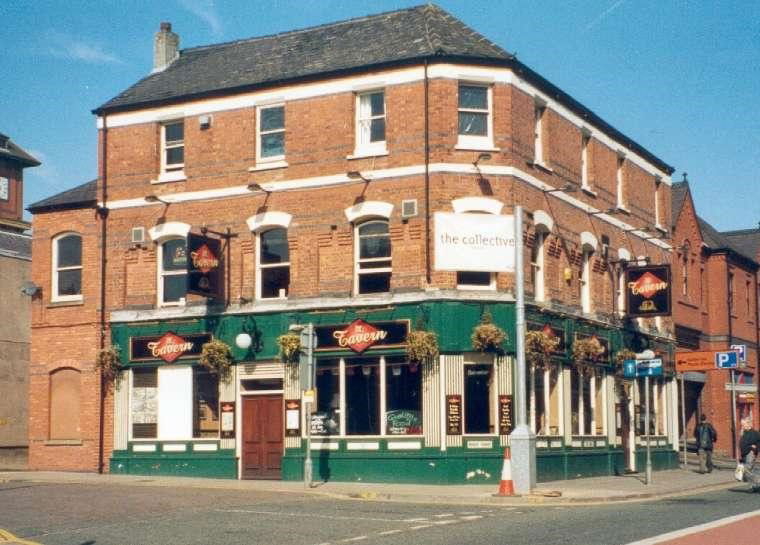
Early 2000s after the name change from Steppes to The Tavern. The Wigan Music Collective had their ve3nue on the middle floor. Photo Brian Thurston.
A year after my first dj set there, I set up my own music promotions business and went on to promote gigs at other venues around town before returning there a few years later to start occasional joint venture gigs with the WMC. In 2005 I brought punk legends The Slits to the Tavern. The band who formed in 1976 would go on to tour with the Clash and the Buzzcocks and released the critically acclaimed ‘Cut’ in 1979 before splitting up in 1982. They reformed in 2005 and their Wigan gig was to be one of their first in 25 years. In 2007 the WMC moved to the Tudor and myself and Sean Doherty from Lupine took over the weekly Saturday night gigs, with the occasional Friday night thrown in. Phil Cadman was the landlord at the time and we brought in the bands such as The Noisettes, Milburn, Cage The Elephant, the Von Bondies alongside the best of what the local scene had to offer. One of Phil’s first jobs was to fix something that had long blighted the venue...a railed opening that looked down onto the pub below. The opening was blocked off and the floor extended, creating a larger capacity and got rid of the long standing worry of glasses being dropped onto the punters below! The new floor was pushed to its limits soon after installation during a sold out Milburn gig. Milburn were close friends with Arctic Monkeys, and had a similar raucous following during their early gigs. A few songs into their set, with the crowd bouncing up and down, the bouncer came running upstairs to inform me the entire ceiling was shaking and he was worried it would come crashing down. Unsure of whether to risk the job the installers of the new floor had done, I decided we couldn’t take the risk so I went onstage to ask the band to request the crowd to calm down to avoid a disaster. This did nothing but encourage the audience to pogo even more and cause the ceiling to shake violently. We had to pull the plug temporarily and take the band off stage. Finally we came to a solution – the band would go back on stage and play 3 more songs but all acoustic. The audience and the floor survived!
When Phil moved on in early 2008 the pub temporarily closed before being taken on by Rich Cavanagh from local studio, Fuzzbox. Again the focus was on live music and the upstairs venue was renovated again. The stage was moved from the original location of the upper balcony to along the back wall in place of the bar. The pub still had its moments in the following couple of years but the local scene and national indie scene started to wane soon afterwards and so it became more dificult to attract regular audiences. The last big gig hosted there was a secret homecoming show for Starsailor in 2009 and within a couple of years the pub was closed.
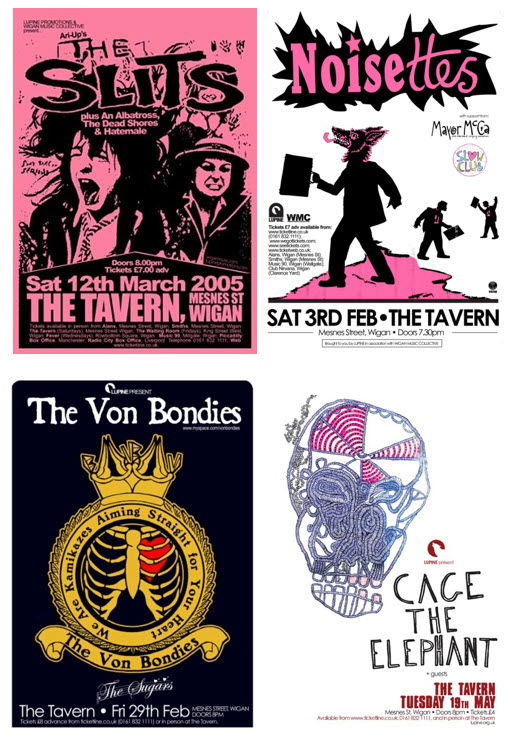
The buildings most recent incarnation was as “Thai Corner”. The bar remained on the ground floor but was to be very under utilised, with the main restaurant based upstairs. The restaurant survived until 2019 when the owners moved to smaller premises on Hallgate.
At the time of writing (September 2021) The future of the building is now uncertain. It was bought for £165,000 in September 2020 by CRF Estates Limited, based in Liverpool. The ground floor and basement are being split into two sections and are up for rent with apartments upstairs to follow in the coming months. Meanwhile it is listed in the plans for the Galleries development area as part of demolition phase 2, despite assurances to the contrary by the Council in personal emails. If the planning application is approved then this opens up to possibility of a CPO on the building.
A building that has demonstrated its ability to adapt to changing uses and trends throughout the decades for almost a century and a half is now facing demolition. The new owners have already begun work on the building, proving that repurposing is possible.
References:
Ancestry.com
British Newspaper Archive
Wigan World website
Wigan Buildings website
Past Forward magazine
Wigan Observer/Wigan Post
additional thanks to Ron Hunt, Paul Gallagher and John Harris
Architect Drawings by William Varty

